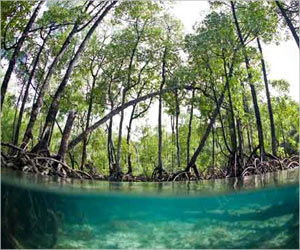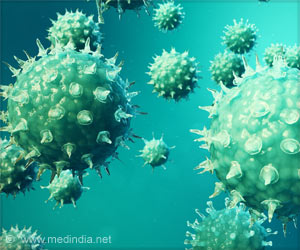Remote sensing was used to analyze land use patterns throughout the horseshoe bat’s range, which extends from Western Europe through Southeast Asia.
Scientists identified potential hot spots where habitat is favorable for these bat species, and where these so-called zoonotic viruses could potentially jump from bats to humans.
“Land use changes can have an important impact on human health, both because we are modifying the environment, but also because they can increase our exposure to zoonotic disease,” said study co-author Paolo D’Odorico, a professor of environmental science, policy and management at UC Berkeley.
“Every formal land use change should be evaluated not only for the environmental and social impacts on resources such as carbon stocks, microclimate and water availability, but also for the potential chain reactions that could impact human health.”
Hot spots are now clustered in China, where a growing demand for meat products has driven the expansion of large-scale, industrial livestock farming.
Concentrated livestock production is particularly concerning because the practice brings together large populations of genetically similar, often immune-suppressed animals that are highly vulnerable to disease outbreaks, the researchers said.
Parts of Japan, the north Philippines and China south of Shanghai are at risk of becoming hot spots with further forest fragmentation, while parts of Indochina and Thailand may transition into hot spots with increases in livestock production.
“The analyses aimed to identify the possible emergence of new hot spots in response to an increase in one of three land use attributes, highlighting both the areas that could become suitable for spillover and the type of land use change that could induce hot spot activation,” said study co-author Maria Cristina Rulli, a professor in hydrology and water and food security at the Politecnico di Milano in Italy.
“We hope these results could be useful for identifying region-specific targeted interventions needed to increase resilience to coronavirus spillovers.”
Human encroachment can also increase exposure to zoonotic disease by reducing valuable biodiversity. .
“By creating conditions that are disadvantageous to specialist species, generalist species are able to thrive,” D’Odorico said. “While we are unable to directly trace the transmission of SARS-CoV-2 from wildlife to humans, we do know that the type of land use change that brings humans into the picture is typically associated with the presence of these bats who are known to carry the virus.”
Creating continuous areas of forest cover and wildlife corridors are more important than increasing total tree cover.
“Human health is intertwined with environmental health and also animal health,” D’Odorico said. “Our study is one of the first to connect the dots and really drill down into the geographic data on land use to see how humans are coming into contact with species that might be carriers.”
Source: Medindia



